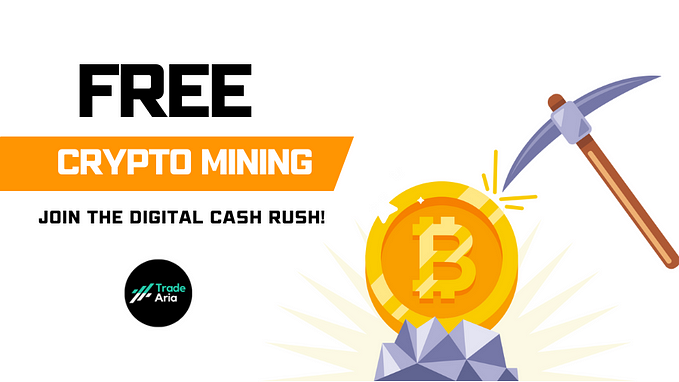Summary: The integration of non-EVM networks into the DeFi ecosystem faces challenges, due to differences in protocols, languages, and governance models. This limits their interoperability with EVM networks and overall scalability, adoption, ecosystem development, and developer familiarity. However, some non-EVM networks offer certain advantages when it comes to speed, cost-effectiveness, customizability, and innovation.
Rubic.exchange is a solution that enables seamless communication and data transfer between EVM and non-EVM networks through the aggregation of DEXs and bridges from various networks. Rubic’s cross-chain tools, a widget and SDK enable integrators with ready-made solutions for bridging the gap between EVM and non-EVM networks, promoting greater adoption and usability in the blockchain space.
The foundation of the blockchain revolution can be traced back to Bitcoin’s launch in 2009, inspiring the creation of diverse chains like Litecoin, Ethereum, Ripple, and more. However, as blockchain networks multiplied, integration challenges arose due to differences in protocols, consensus mechanisms, languages, and governance mzsodels. The EVM addressed some of these challenges, introducing smart contracts and enabling various dApps. Since then, EVM dominates the DeFi space, and non-EVM networks face issues with integration into it.
There are certain interoperability challenges between EVM and non-EVM networks, and there’s a pressing need for solutions that enable seamless communication and data transfer between these diverse blockchain platforms. One of these solutions is Rubic. Let’s dive in and explore why!
The Integration Challenge for Non-EVM Networks.
As the DeFi sector gained traction, EVM became the de facto standard due to its robust smart contract capabilities and a vast array of applications built on Ethereum. Consequently, most DeFi protocols and platforms were designed with EVM compatibility in mind. This resulted in non-EVM networks, such as Litecoin, Cardano, Ton, and others, facing hurdles when attempting to be integrated within the DeFi ecosystem beyond just their token presence. So, let’s delve further into these challenges and explore the factors preventing the scalability of non-EVM networks in DeFi.
Non-EVM networks operate independently from Ethereum, adhering to their own rules, languages, smart contracts, and wallet formats. While this diversification fosters a more robust crypto ecosystem and encourages innovation, it presents a hindrance when they try to cooperate. Each non-EVM network may have its own specific challenges, but here are some common challenges that can be associated with such networks:
- Adoption and Network Effects
One of the significant challenges for any blockchain network is achieving widespread adoption. The dominance of the Ethereum ecosystem and its EVM-based smart contracts has created a strong network effect, making it difficult for alternative platforms to attract developers, users, and projects.
EVM compatibility can drive easier traffic acquisition and ecosystem expansion because Ethereum users can quickly migrate to new chains without creating a new address and wallet. The same logic applies to dApp developers: one can fork existing, popular DeFi open-source protocols or integrate SDKs, for example.
- Ecosystem and Tooling Limitations
Established EVM-based networks like Ethereum have a mature ecosystem with various DeFi applications, wallet integrations, DEXs, and other infrastructure components. This creates a propitious environment, where users can swap assets on almost any DEX, across different chains in any direction and with no KYC.
Non-EVM networks might lack a similar level of ecosystem development, making it challenging to build a robust and vibrant network with supporting services. They are mostly present on CEXs, which offer a complicated KYC process and represent a custodial solution.
- Interoperability
Interoperability is crucial for the growth and integration of different blockchain networks. Many existing decentralized applications and protocols are built on Ethereum and depend on its standards and infrastructure, it’s not easy for them to go multichain on non-EVMs. They can only do so with bridges/a cross-chain aggregator built-in SDK (like Rubic’s).
Non-EVM networks also often lack cross-chain solutions and are limited in the number of supporting bridges to enable communication and data sharing between different blockchain platforms.
- Developer Learning Curve, Familiarity, and Tooling
Ethereum’s EVM has been around for a considerable time, resulting in a vast developer community and a rich set of tools, libraries, and frameworks. Non-EVM networks may face challenges in providing a similar level of developer support, documentation, and tooling, making it less accessible for developers to build applications on those networks.
Moving from Ethereum’s EVM-based development to a different network can involve a learning curve for developers. They need to understand new programming languages, development frameworks, and architectural differences. This transition can slow down the adoption of non-EVM networks, as developers might prefer to stick with what they are already familiar with.
Domination of EVM Chains in the Crypto Market
Apps built on EVM networks leverage specialized tools and rules that facilitate seamless interaction. Although sending assets between EVM projects is also prone to challenges, it is comparatively easier than bridging the gap between EVM and non-EVM chains. Consequently, the crypto market faces fragmentation, with EVM networks dominating TVL (total value locked) and exhibiting significant interoperability, while non-EVM networks remain confined to their isolated domains. The challenge lies in finding a way to unify both ecosystems for enhanced efficiency.
According to data from DefiLlama, EVM-compatible chains hugely surpass non-EVM networks in TVL and a number of protocols (as of May 2023):
The data is relevant for June 9th, 2023
As mentioned above, developers often want EVM compatibility to replicate and deploy to new chains quickly, and the disadvantage of non-EVM compatible chains is obvious in terms of the number of projects.
Non-EVM Chains Give Projects Room for Innovation
However, EVM possesses numerous shortcomings. These are design problems like a lack of inspection and traceability of its programming language, Solidity, expensive and slow calls to external smart contracts, and illegible on-chain code that plagues projects and makes them unsafe today. These flaws directly stem from the rigidity of EVM and the austerity of its bytecode. This austerity means there is a limit to the features and functions that can be built through it, and this limit negatively affects the speed, interoperability, and safety with which projects can be built.
For now, it is evident that non-EVM chains have more room for innovation because the limitations of Ethereum do not constrain them. They can implement many different features to provide services for specific users, and stand out from the crowd of dApps. The presence of non-EVM chains such as Solana makes the fight between EVM and non-EVM worth watching. For example, projects like Raydium and Serum are unique to Solana.
Given the speed and low fees of non-EVM networks, they also have the potential to become a thriving DeFi ecosystem. The growing number of dApps deployed on non-EVM chains supports this idea.
The data is relevant for June 9th, 2023. Source: dAppRadar
Overall, non-EVM networks offer several advantages that pave the way for innovation:
- Scalability
Non-EVM platforms often offer improved scalability compared to the Ethereum network, which has faced challenges with network congestion and high gas fees. These alternatives can handle a higher transaction throughput, making them more suitable for applications with a large user base.
- Speed
Non-EVM platforms generally provide faster transaction confirmation times due to their optimized consensus mechanisms and network architecture. This enables real-time interactions and enhances the user experience for applications, requiring instant responsiveness.
- Cost-effectiveness
By avoiding the congestion and high gas fees associated with the Ethereum network, non-EVM platforms offer a more cost-effective environment for developers and users. Lower fees and efficient resource allocation can make dApps more accessible and financially sustainable.
- Customizability
Non-EVM platforms often provide greater flexibility and customizability for developers. They offer a range of programming languages and frameworks beyond Solidity, the primary language used for Ethereum smart contracts. This allows developers to leverage their existing skills and choose the tools that best suit their needs.
- Innovation and Experimentation
The non-EVM ecosystem is a hub for innovation and experimentation in the blockchain space. These platforms often introduce novel concepts, consensus mechanisms, and features that push the boundaries of what is possible in DeFi. Developers can explore new ideas and create unique solutions for various industries.
EVM to Non-EVM: Exploring Interoperability Challenges
Achieving interoperability between EVM and non-EVM networks has been a persistent challenge in the blockchain industry.
Many decentralized exchanges primarily support EVM-based tokens and have limited support for tokens from non-EVM networks. This restricts liquidity and trading options for non-EVM tokens, as traders must rely on centralized exchanges or specialised bridges.
Furthermore, even if users manage to find a DEX that supports non-EVM networks, the challenges still persist. The integration of non-EVM networks can introduce complexities for users, such as the need to switch wallets or learn new interfaces and processes. This friction in user experience may deter broader adoption and hinder the seamless interaction of non-EVM networks with DeFi applications.
Rubic Exchange: Exploring Potential Solutions
However, there are various dApps that make it easy for crypto users to send assets from an EVM chain to a non-EVM chain, with about the same ease that they can send assets from an EVM chain to an EVM chain:

Rubic exchange aggregates more than 220+ DEXs and bridges and 70+ networks, including over 30 non-EVM networks, such as Bitcoin, Litecoin, Ripple, Solana, Near, Osmosis, Ton, Waves, etc., enabling users to perform cross-chain swaps between EVM and non-EVM networks using a single interface.
Traditionally, to perform cross-chain swaps between EVM and non-EVM networks, users had to rely on individual bridges or CEXs, which often introduced additional complexities and risks. Rubic.exchange simplifies this process and serves as a bridge and a DEX at the same time, which enhances convenience and reduces friction.
Interoperability between EVM and non-EVM networks has been a longstanding challenge in the blockchain space. However, with the emergence of innovative solutions like Rubic.exchange, the gap is gradually being bridged. By streamlining asset transfers and providing a comprehensive platform for cross-chain swaps, Rubic and similar projects contribute to the development of interoperability, empowering users to explore the vast potential of non-EVM networks. As the blockchain ecosystem continues to evolve, these solutions will play a crucial role in shaping the future of decentralized finance and cross-chain interactions.
Expanding Interoperability: Leveraging Rubic’s Cross-Chain Tools
Rubic’s commitment to scaling and promoting interoperability in non-EVM chains is exemplified through our cross-chain tools. With the availability of Rubic’s SDK and Widget, a wide range of DeFi projects can seamlessly integrate the same feature toolkit and cross-chain solutions showcased on the Rubic App. This integration empowers various platforms to extend interoperability opportunities between EVM and non-EVM networks, enabling their users to benefit from a comprehensive and readily available solution.
Through Rubic’s cross-chain tools, integrators provide users with a ready-made solution for bridging the gap between EVM and non-EVM networks. This approach eliminates the complexities associated with developing custom interoperability solutions from scratch, saving time and resources. By using Rubic’s solutions, these integrators can offer their users a seamless and efficient cross-chain experience, promoting greater adoption and usability in the blockchain space.
Our vision is that Rubic’s new umbrella SDK will aggregate the best Web3 cross-chain tech — from signals and oracles, to tokens and NFT bridges, in ready-made templates for DEXs, Lending/Farms, and more. This will help developers easily make their Web3 dApps cross-chain, regardless of what their function is.
About Rubic
Rubic is a Cross-Chain Tech Aggregator for users and dApps.
Right now, Rubic aggregates 70+ major blockchains, 220+ DEXs and bridges, and enables swapping of 15,500+ assets with the best rates, highest liquidity, and transaction speeds — in one click. Users can do it on https://app.rubic.exchange, but we also provide tools for dApps to enable cross-chain swaps (https://tools.rubic.exchange).
On top of that, Rubic’s app and our cross-chain widget provide fiat on-ramp services, making crypto easy to access and buy.






